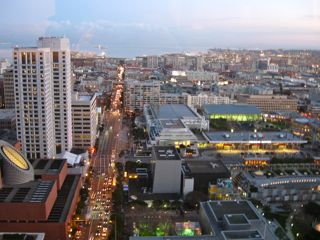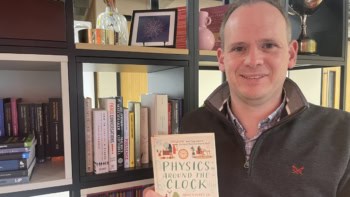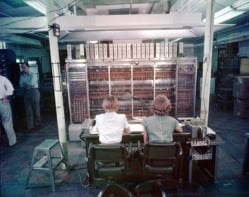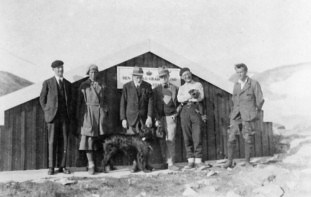
View of the Moscone convention centre and San Francisco Bay
By Margaret Harris
Fifty years ago, lasers were “a solution looking for a problem”. Today there seems to be no limit to their reach. There are lasers in space and lasers underground; lasers in the lab, factory, hospital and office; lasers that could scarcely singe a fly and lasers that cut through metal as if it were butter. Scientists use lasers in precision measurements of systems that range from atoms to planets. Medical doctors use them to perform delicate surgery. Nearly everyone uses them to listen to music or read other kinds of data. For astronomers, lasers can be a tool for making an artificial star in the sky; for fusion physicists, they may someday be the key to creating a very different kind of artificial star, this time down here on Earth.
Oh, and they look cool, too.
This May marks the 50th anniversary of the invention of the laser. At Physics World we’re kicking off our celebrations with a visit to Photonics West, the world’s biggest trade show and conference for laser-related science and technology.
Traditionally held in Silicon Valley, California, this year Photonics West has moved a few miles north, to San Francisco’s Moscone Center. This vast convention hall (it takes up most of the lower right of this photo) has space for over 1000 exhibitors and an estimated 20 000 conference delegates — including students, industrial scientists, technical sales staff, academics and educators.
Besides checking out the exhibit hall, talking to delegates and attending a few of the plenary talks (just a few, mind — the conference handbook looks like the Bristol telephone directory), I and other members of the physicsworld.com team have also been interviewing a handful of top laser scientists about how they use lasers in their research, and what kinds of applications will become possible during the next 50 years. We’ll post videos of these interviews in May to coincide with a special issue of Physics World magazine dedicated to this ubiquitous piece of kit, and some of the discoveries it’s made possible over the years.
One thing is clear: if the next 50 years of the laser are as successful as the first, it’s going to be an interesting and — if you’ll pardon the pun — colourful time for physics research.



